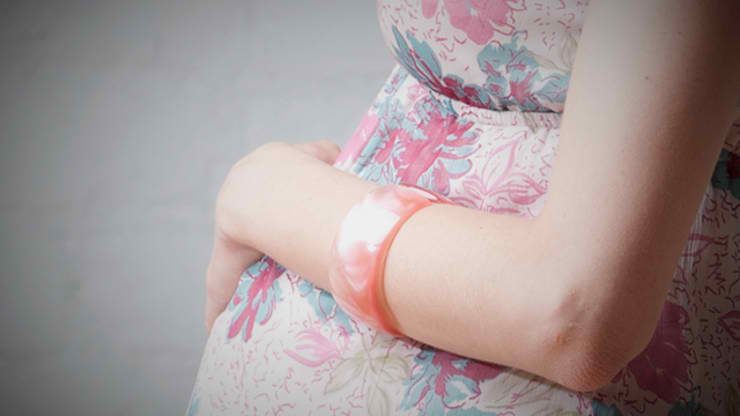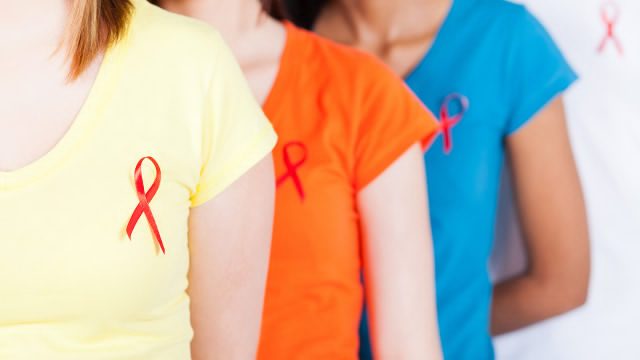SUMMARY
This is AI generated summarization, which may have errors. For context, always refer to the full article.

MANILA, Philippines — Despite the many efforts of advocates to educate the public about HIV/AIDS, the number of Filipino babies infected with the disease is still going up, said World Health Organization (WHO) country representative Julie Hall.
She added that some Filipinos still believe that the problem is exclusive to men having sex with men (MSM), dismissing the fact that women, too, are affected by the epidemic.
An HIV-positive mother could transmit the virus to her child during pregnancy, labor, delivery, or breastfeeding.
“Virtually every other country in the world, it’s going down, the number of babies that are infected with HIV. The Philippines is one of the few where it’s actually going up,” Hall told Rappler. (READ: PH has world’s fastest growing HIV epidemic)
Such scenarios could be prevented if only more mothers get tested. Once the woman knows her status, she could start treatment and take the necessary steps to improve her health.
To prevent mother-to-child transmission, HIV-positive women could receive HIV drugs during her pregnancy. Her baby could also be given the drugs shortly after birth.
“HIV in babies is preventable and there’s a lot that can be done,” explained Hall. “But in this country, there is no regular, routine, antenatal testing for HIV, so very few women are offered the test.”
She added: “And if they are offered the test, they have to pay for it, whereas in many other countries, it’s a free opt out system.” (READ: Teenage pregnancy and HIV)
According to the 2013 National Demographic and Health Survey (NDHS), only 2% of women have ever been tested for HIV in the Philippines.
How women acquire HIV
Hall advised the Philippines to make antenatal counselling, screening, and free testing readily available, especially to women at higher risk — those who inject drugs or those whose partner is also having sex with men.
How do women acquire HIV? Here are some of the ways, according to the Center for Disease Control and Prevention:
- Being unaware of their male partner’s risky behaviors like injection drug use or having sex with other men
- Vaginal or anal sex without a condom. Some women are also forced by their partners not to use condoms.
- Sexually transmitted diseases like gonorrhea and syphilis increase the risks of getting or spreading HIV.
- Engaging in risky sexual behaviors like having multiple sexual partners.
- Sharing drug injection equipment with someone HIV-positive.
According to Hall, one-third of those who inject drugs are women. Aside from them, another group at risk are sex workers.
“We know that there are many commercial sex workers in the Philippines, the HIV rates are fairly low in commercial sex workers who regularly go to social hygiene clinics,” said Hall. But not all sex workers visit such clinics that’s why rates are higher among this group.
These women, said Hall, are in need of support and care.
HIV awareness

Although 92% of Filipino women aged 15 to 49 said they “have heard of AIDS,” only 55% knew where they could get an HIV test, the 2013 NHDS revealed.
Among all regions, women in the ARMM showed the least AIDS awareness at only 52.2%.
Knowledge, however, varies by level of education. While 98% of women with college or higher education are aware of AIDS, only 44% of those with no education are. Such difference is also observed between higher and lower income women.
Meanwhile, knowledge about HIV testing centers is higher among women in urban areas than those in the rural.
The survey found that “many women in the Philippines lack accurate knowledge about the ways in which the AIDS virus can and cannot be transmitted.” (PODCAST: Let’s talk about HIV)
In fact, some still believe in the following misconceptions:
- A healthy-looking person cannot have AIDS
- AIDS virus can be transmitted through mosquito bites
- It can also be transmitted through hugging or shaking hands with an infected person
- It can be transmitted by sharing food with someone infected
Ongoing challenge
Hall urges the government to reach out to sex workers who do not avail of free HIV-related services.
The biggest challenge, she pointed out, is still stigma and discrimination which lead to “judgment and blame and other fairly negative emotions that can make it extremely difficult for individuals to come forward, to get tested, get the help they need.”
In March 2015, the health department recorded 667 new cases, with a total of 24,376 the cumulative cases since the country’s first case in 1984.
Other countries also had high figures, said Hall, but were eventually able to control the situation. “It’s going to take a while, but the more that is done, the faster it can be brought into control.” (READ: Stop spread of HIV)
“I think we need to double, triple, quadruple our efforts over the next few months, couple of few years,” she added. — with reports from Jee Y. Geronimo/ Rappler.com
Got stories to tell? Share your ideas and stories on women and development with move.ph@rappler.com. Speak up #GenderIssues!
People with red ribbon image and pregnant woman image from Shutterstock
Add a comment
How does this make you feel?
There are no comments yet. Add your comment to start the conversation.